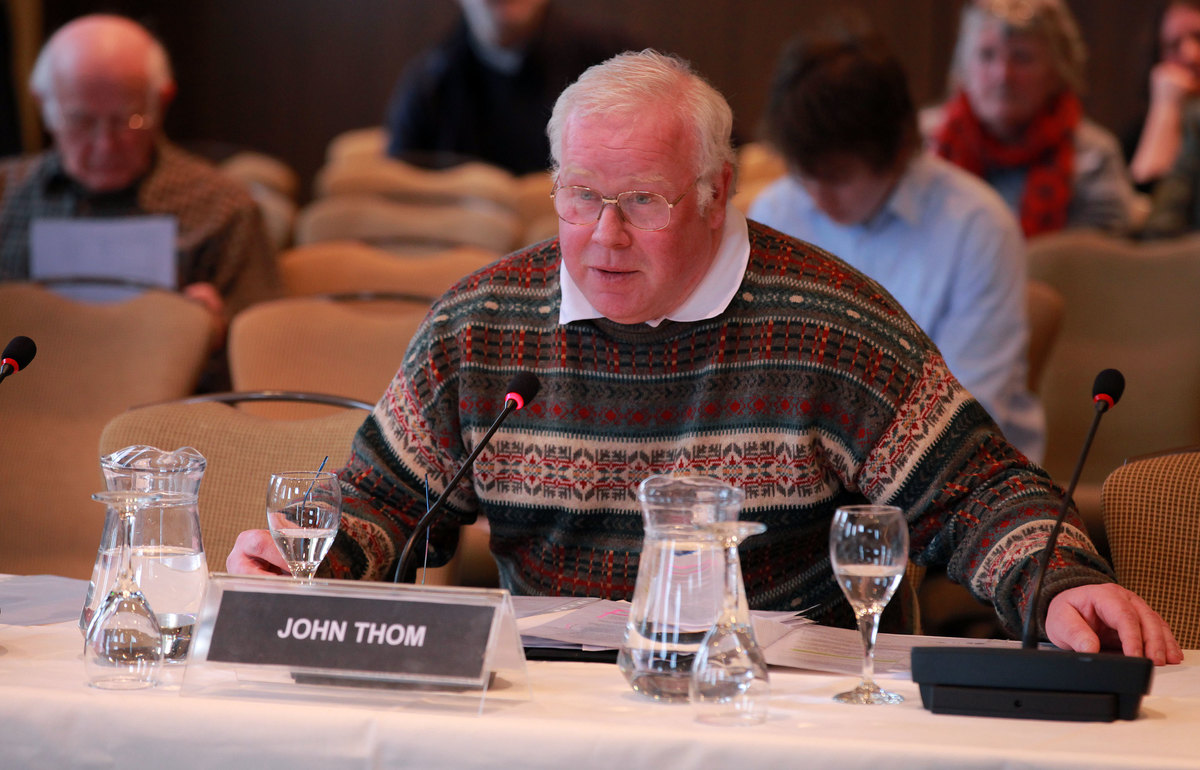
Petitioner: John Thom on behalf of RNBCC Crayfish Committee, Ken Dee Catchment
Status:
Closed
Date Lodged:
19 February 2015
Calling on the Scottish Parliament to urge the Scottish Government to amend the existing licencing regime to allow for the commercial trapping of American Signal Crayfish in Scotland.
Summary:
23 February 2015: The Committee took evidence from John Thom. The Committee agreed to write to the Scottish Government. Link to Official Report 23 February 2015
Below: John Thom at the meeting of 23 February 2015

28 April 2015: The Committee agreed to invite Scottish Natural Heritage and the Scottish Environment Protection Agency to give evidence at a future date. Link to Official Report 28 April 2015
26 May 2015: The Committee took evidence from Dr Scot Mathieson, Principal Policy Officer (Conservation), Scottish Environment Protection Agency and Professor Colin Bean, Policy and Advice Manager (Freshwater), Scottish Natural Heritage. The Committee agreed to reflect on the evidence heard and the additional information to be provided by the Scottish Environment Protection Agency and Scottish Natural Heritage and consider a paper by the Clerk at a future meeting. Link to Official Report 26 May 2015
22 September 2015: The Committee agreed to write to the Scottish Environment Protection Agency and Scottish Natural Heritage. Link to Official Report 22 September 2015
1 December 2015: The Committee agreed to write to the Scottish Environment Protection Agency and Scottish Natural Heritage. The Committee also agreed to ask the Scottish Parliament Information Centre to undertake a literature review. Link to Official Report 1 December 2015
9 February 2016: The Committee agreed to close the petition, under Rule 15.7, on the basis that that there appears to be a consensus that allowing the commercial trapping of American signal crayfish, even as a control measure, is likely to lead to expansion of its range. In doing so, the Committee agreed to write to the Scottish Environment Protection Agency, Scottish Natural Heritage and the Scottish Government to highlight the need to monitor American Signal Crayfish populations and develop a solution to the issue. Link to Official Report 9 February 2016
Written Submissions:
Supplementary Documents: